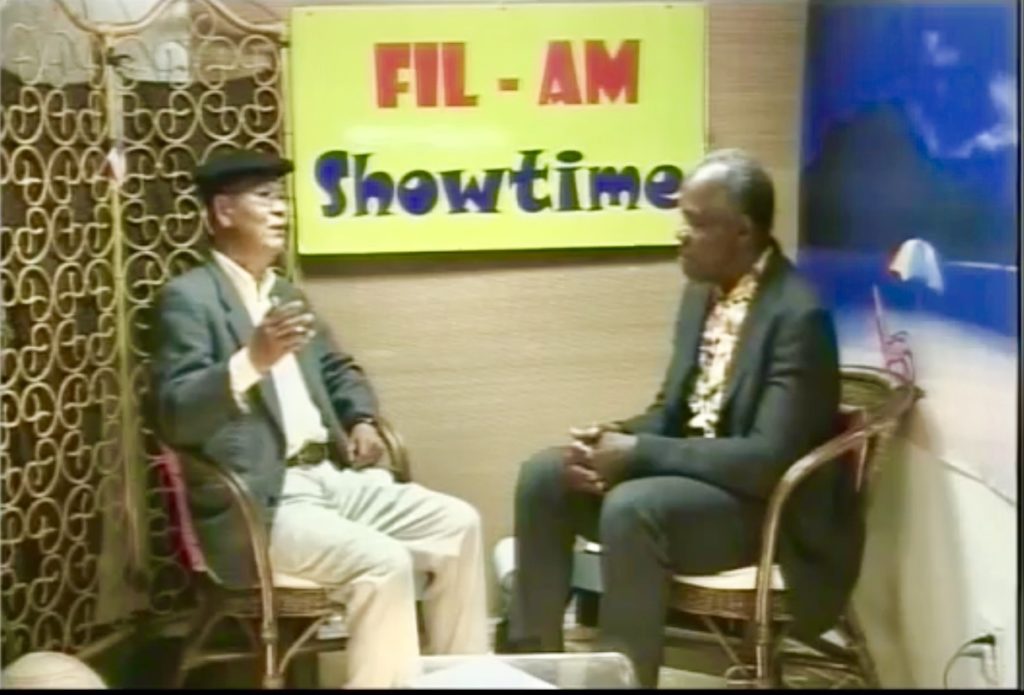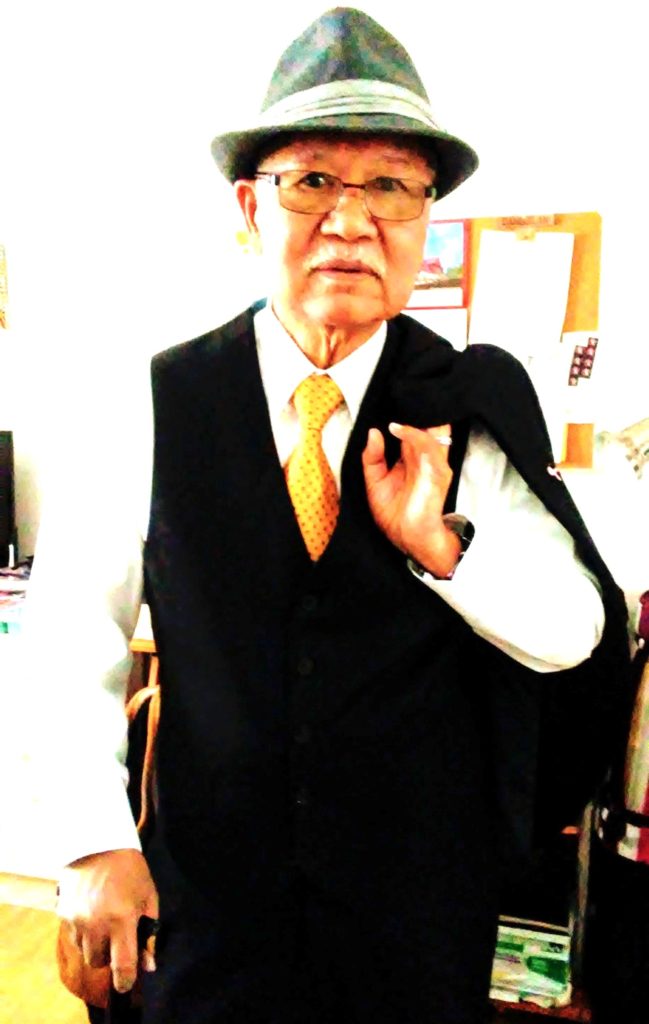Deadly gang war gave birth to hit Fil-Am TV show in Alaska

Host Nez Danguilan with guest, actor Danny Glover on public television show “Fil-Am Showtime” in Anchorage, Alaska. CONTRIBUTED
ANCHORAGE, Alaska — Barely three years after Nez Danguilan first arrived in Anchorage, Alaska, in 1991, a 14-year-old Filipino teenager was killed in a ruthless gang war here, involving young Mexican and Asian gang members.
As a small ethnic community, with an estimated 5,000 Filipinos working mostly at canneries and military bases at the time, Danguilan recalls that most Alaskans were largely unfamiliar with Filipinos.
“That deadly gang incident did not help, either,” he said. “Filipinos were depicted, particularly in the media, as a liability.”
Awash with negative stories about the Filipino community, Danguilan says it was a turning point for him and fellow Filipinos to get rid of the stigma and show Filipino talents and their contributions to Alaska.
“We thought, ‘it’s time for us to focus on the positive side of our community,’” he said. “And coming up with a Filipino program on television was the best thing we could think of.”
A big hit
Then, in 1994, Danguilan contacted GCI Channel 44, a public television station in Anchorage, to air a half-hour program, “Fil-Am Showtime,” featuring hardworking and successful Filipino Americans — a Filipino student who earned a prestigious scholarship, a Filipino American teacher in a public school system, a basketball team of Filipino Americans and a Filipino working for a state government agency.
The show was a big hit.
Soon, his show became a regular television program, highlighting weekly stories about Filipinos in Alaska and around the world. A few years later, the show was extended to an hour-long segment aired on four other local television channels across the state.
“It served as a medium of communication for Filipinos to know what’s happening in their own backyard and the homeland they had left behind,” said Danguilan, who is a retired civilian personnel for the U.S. Department of Defense. “It definitely informed Alaskans about the Filipino community.”
Deep roots in Alaska
Filipinos have deep roots in Alaska, contrary to common impressions that they are recent immigrants in the state. In 1788, records show that the first Filipinos came to Alaska as crew on American whaling ships, as sorters for gold mines, and as salmon cannery workers known as Alaskeros.
Census data show that there are now about 20,000 Filipinos who call America’s Last Frontier a home. A majority of these Filipino families live in Anchorage, the state’s most populous city.
With a more than 50-percent population increase since 1990, Filipinos represent the largest Asian American subgroup in Alaska. By 2025, reports say, one in four people in Alaska will be Filipino.
Recognition from Anchorage Mayor
Acknowledging the significant contributions of Filipinos, in 2014, Anchorage Mayor Dan Sullivan honored Danguilan with a Community Achievement Award for “Fil-Am Showtime” as the longest-running community television program in the entire state of Alaska.
“It was not just a recognition for my efforts,” Danguilan added, “but for the achievements of the whole Filipino community.”
At 78, facing the physical challenges of maintaining a full television weekly segment, Danguilan retired from hosting the show the same year he received the award. He had passed the opportunity to young Filipino Americans in recent years, but the show had run into some financial gridlock.
Continuing support from Fil-Ams
But members of the Filipino American community here continue to see the role of the “Fil-Am Showtime” as an integral part of Alaska.
“[It] was valuable because ‘Fil-Am Showtime’ gave a voice to the Filipino community, showcasing individuals and programs to the Filipinos as well as to the rest of Anchorage,” Lourdes Crawford, a Filipino American teacher who has lived in Alaska for more than 30 years.
One of the benefits to Alaska of sharing Filipino culture through the show, she added, is that it allowed Alaskans to see how important the Filipino community is to the state in many areas: education; industry; and civic engagement.
“It was also a clearing house for employment opportunities and events,” Crawford said. “There were travel segments on the Philippines showcasing what the country has to offer.”
Still, Danguilan plans to revive the “Fil-Am Showtime.” He said that he’s now “talking with several people in the community who are interested in running the show.”
If there is one thing that he misses in his daily life, he adds, it is undoubtedly hosting the show.
“Through the years, I’d always end the segment with these words, ‘Magmahalan tayo sa tuwi-tuwina (Let’s always love each other always),’’ he said. “I hope to do that again soon.”


